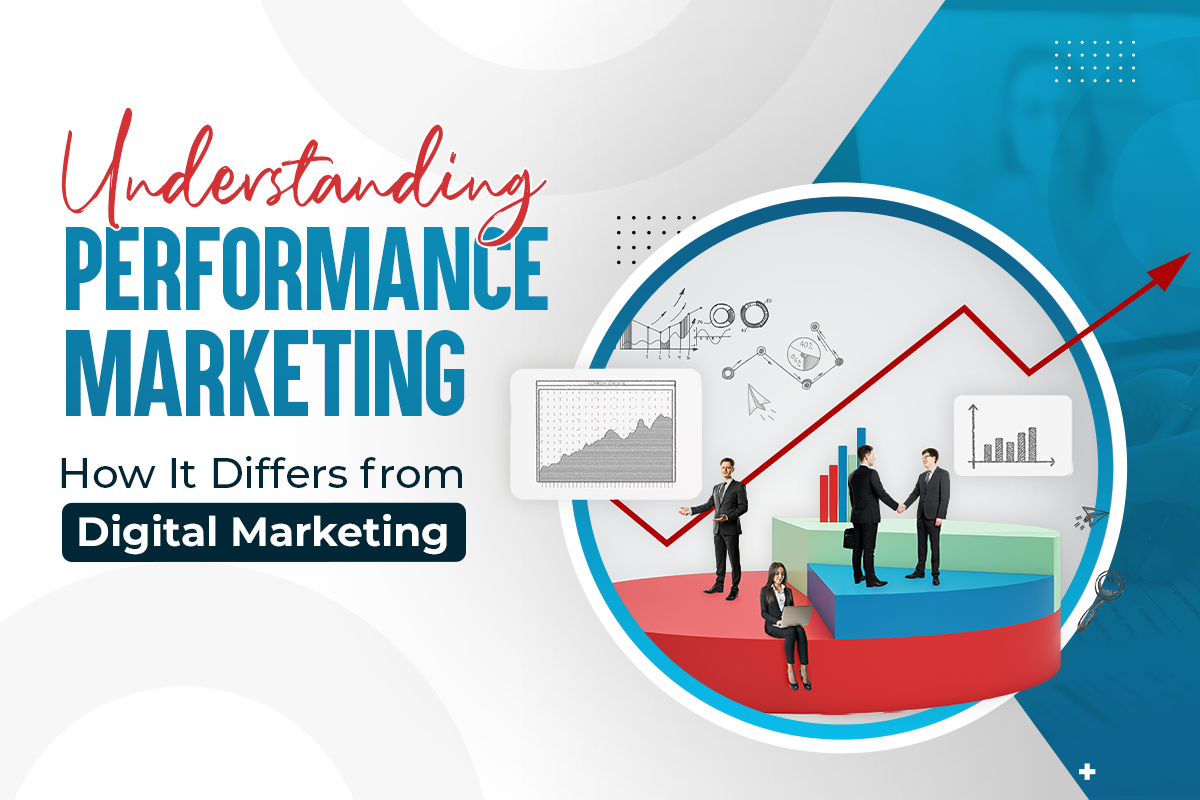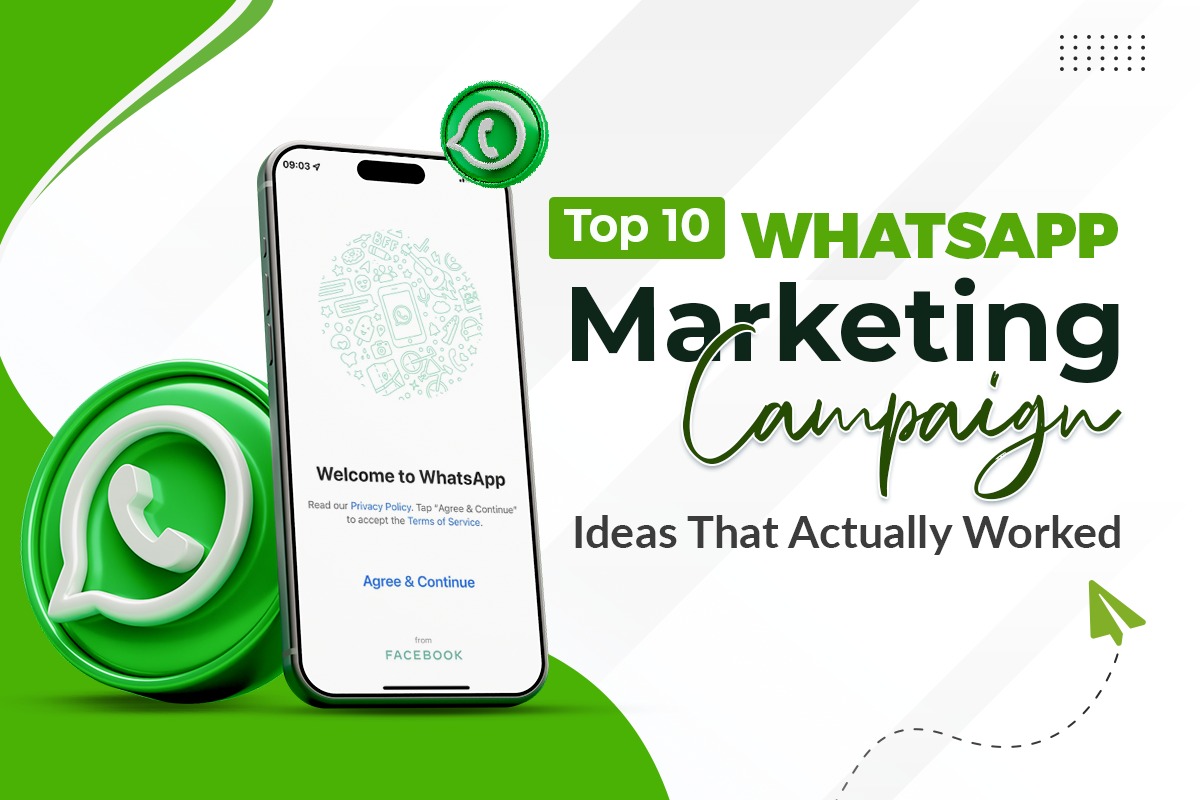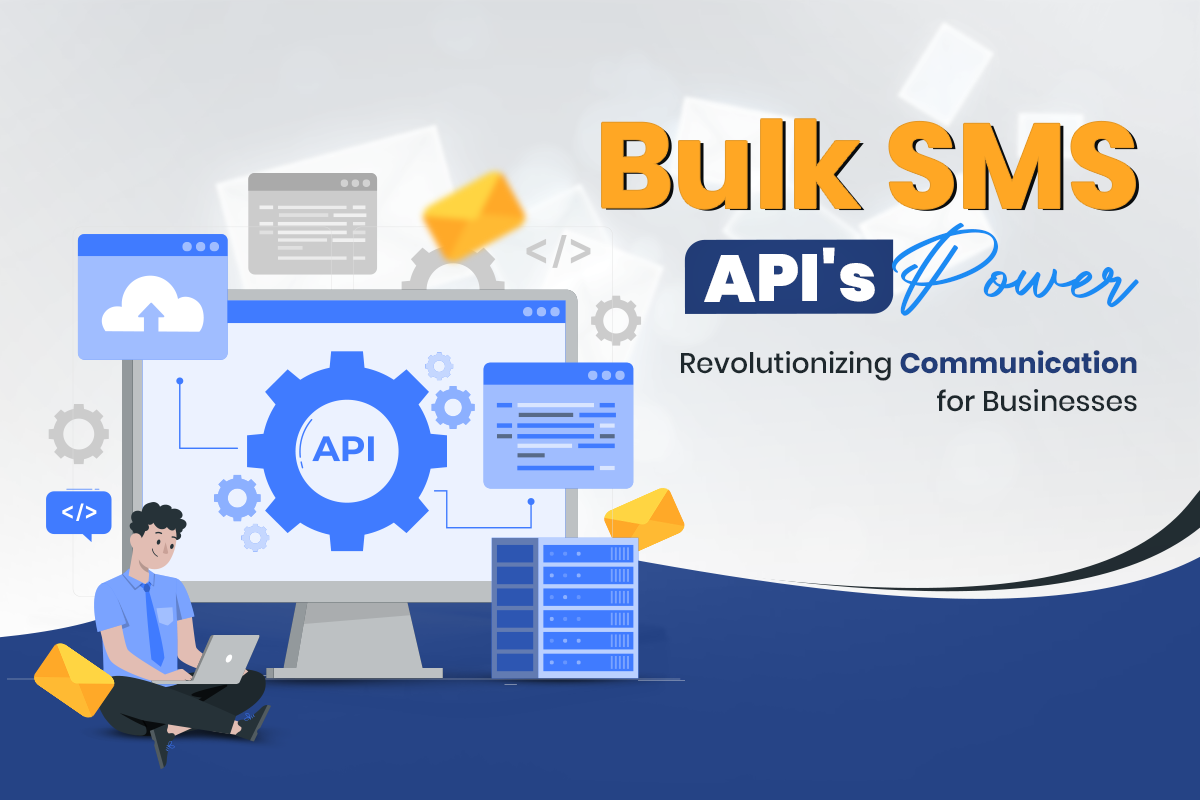
Marketing has changed from just catchy phrases and wide exposure. In today’s competitive market, every dollar spent must bring in value. That’s where the argument between digital marketing and performance marketing gets interesting.
At its core, performance marketing in digital marketing reflects the shift from broad exposure to measurable results. As digital marketing ads become more strategic, businesses seek better ROI through data-driven campaigns.
The digital world is where they both play, but their rules, goals, and ways of doing things are very different. Marketers can get the most out of their money and time by knowing what makes each group different.
What does marketing mean in the digital world?
Digital marketing is the whole system. It’s the general term for all online marketing.
This includes:
- SEO and marketing through content
- Campaigns on social media
- Email marketing
- Paid ads
- Improving the website
What is its goal? To get people to see, trust, and stay with you for a long time.
It’s not always directly related to measurable conversions, but it sets the stage for future success. Think of it as building a brand that has a lot of power.
A digital marketing business often takes a broad approach to build lasting results. The same goes for a PPC agency in Kolkata, which focuses on smart, long-term strategies. This approach helps brands grow steadily and stay competitive.
What does performance-based marketing mean?
Performance marketing gets more specific. It only looks at results that can be measured.
The only thing that matters for every campaign is results. That could mean clicks, leads, downloads, or sales.
What makes it different is:
- You only pay for actions, not views.
- Campaigns are always being watched and improved.
- Meta Ads, Google Ads, and affiliate networks are the most popular platforms in this area.
This reflects how performance marketing in digital marketing has grown into a strong ROI-centric solution. Businesses today expect their performance marketing strategy to deliver trackable outcomes.
It’s a strategy that focuses more on ROI and less on getting the word out.
Important Differences That Matter
Both are available online, but they have different uses. Here’s a quick look at the differences:
| Part | Digital Marketing | Performance Marketing |
|---|---|---|
| Focus | Awareness and Getting Involved | Conversions that can be measured |
| Payment Model | Upfront or Retainer-Based | Pay-per-action |
| Measurement | Long-term metrics, like reach and traffic | Direct KPIs (CPL, CPA, ROI) |
| Type of Strategy | Holistic and focused on the brand | Tactical and focused on results |
| Timeframe | Building a brand over the long term | Short- to medium-term campaign victories |
Both strategies can and often should work together. One drives the brand. The other makes things happen.
Understanding how performance marketing works helps businesses identify when to shift focus toward performance-based ROI.
Which one gives you a better return on investment?
It depends on what you want to do.
If you need leads or sales right away when you launch a product, a performance marketing strategy can help you get them quickly and keep track of them.
However, digital marketing can help you build brand authority and stay in your audience’s mind for a long time.
Smart brands do both to get the most out of their money:
- Use performance marketing to get quick wins
- Use digital marketing to build your reputation and presence
This mixed method usually gives the best return on investment across the board.
Many brands find the best results by choosing the best digital marketing agency in Kolkata that offers both awareness-driven and ROI-driven solutions.
When should you use each one?
Use digital marketing when you:
- Want to make more people aware of your brand
- Are focused on their long-term plans
- Need to build trust before you sell
Use performance marketing when you:
- Need results right away
- Have a clear offer or product
- Want to quickly grow a successful campaign
It’s important to match the strategy to where your business is at. Don’t make one better than the other.
The success of performance-based marketing often depends on choosing partners who know how digital advertising impacts your funnel at every stage.
Case Studies
Case Study 1: Paper Boat – Getting People Involved Emotionally
During the monsoon season in India, Paper Boat started its #FloatABoat campaign. They linked a social share to a ₹20 offering to education. The campaign got hundreds of posts and a lot of people interacting with the brand. It used both emotional stories and digital momentum. This is an example of performance-based marketing.
Case Study 2: NaturalTein – Specialized Whey Protein Scale
NaturalTein worked on a targeted campaign. They mixed SEO, social media, email, and ads that were aimed at specific people. The conversion rate went up to almost 7.5%, and the ad ROAS went up high. Their digital advertising campaign, which was based on performance-driven marketing, increased brand reach and profits.
Conclusion
There isn’t a single answer that works for everyone. Both methods are important.
Digital marketing helps the brand grow. Performance marketing gets people to buy things. Each one is worth something on its own. They can’t be stopped when they’re together.
If ROI is your guiding light, don’t pick one; mix them. You can get the reach, results, and return you want by using both channels in a smart way.
Make your money work harder. Make your strategy more detailed. And let your marketing do more than just show up; let it work.
That’s the real power of performance marketing in digital marketing—when it works in harmony with awareness campaigns.
Now more than ever, understanding the role of performance marketing vs digital marketing helps businesses choose the right approach for every campaign.
In a crowded space, performance marketing in digital marketing isn’t just a tactic. It’s a mindset shift. And it’s the edge every business needs to thrive.








